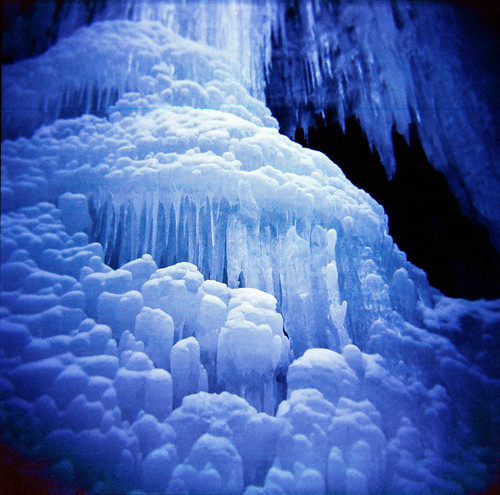Using Ice to Cool Down the Grid
Posted by Big Gav in energy storage, ice, ice energy
Technology Review has an article on "devices that make ice at night to replace air-conditioning during times of peak power demand" - Using Ice to Cool Down the Grid.
Over the next few weeks, a consortium of municipal utilities in California will begin retrofitting government offices and commercial properties with systems that use ice made at night to replace air-conditioning during the day. It's part of a pilot program for the devices, which are built by Windsor, CO-based Ice Energy. If widely deployed, they could reduce fuel consumption by utilities by up to 30 percent and put off the need for new power plants.
The first devices will be installed on about two dozen city-owned buildings in Glendale, CA, under the plan being coordinated by the Southern California Public Power Authority. Over the next two years, the 11 participating utilities will install 1,500 of the devices, providing a total of 53 megawatts of energy storage to relieve strain on the region's electrical grid. The project is the first large-scale implementation of Ice Energy's technology.
Each Ice Energy device is designed to make ice overnight, when demand for electricity is low, using a high-efficiency compressor to freeze 450 gallons of water. Around midday, the cooling mode kicks in, and the device shuts off the building's regular air conditioner for a six-hour cycle. It pipes a stream of coolant from the slowly melting block of ice to an evaporator coil installed within the building's heating, ventilation, and air-conditioning blower system. Once the ice is melted, the air conditioner returns to normal operation. Brian Parsonnet, Ice Energy's chief technology officer, says the Ice Bear can cut a building's power consumption by 95 percent during peak hours on the hottest days.
Cutting demand for electricity during peak hours reduces the need to build new power plants. It also allows utilities to rely on their most efficient power plants, says Ronald Domitrovic, a senior project manager for electric utilization at the Electric Power Research Institute. He says that when utilities fire up their "least efficient, oldest, and least desirable" generating resources to meet peak demand, every increment of increased power on the grid sends costs surging, whether one is talking fuel costs, greenhouse gas emissions, or service reliability. However, at night, utilities draw on their most efficient power plants, which use less fuel than power plants used only during peak hours. The utility also saves energy at other points in the grid--for example, cooler power lines at night transmit electricity more efficiently.
Domitrovic says systems that use ice or cold water on a large scale to provide cooling for campuses and large buildings have "been around for some time." But he says these are usually "expensive one-off units, designed specifically for the building," and that the smaller modular thermal storage systems that Ice Energy provides "can be deployed with relative simplicity" to serve one- or two-story commercial buildings. Ice Energy says that cooling units housed at distributed sites can be networked, presenting utilities with a resource that can be dispatched as needed to help manage demand on the grid.






